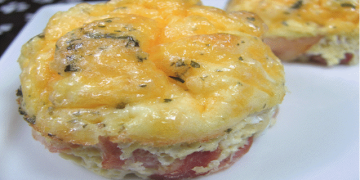Terry Murphy 2025-09-02 15:22:00 news.harvard.edu
What tricks can organic molecules be taught to help solve our planet’s biggest problems?
That’s the question driving Assistant Professor Richard Y. Liu ’15 as he pushes the frontiers of organic chemistry in pursuit of cleaner synthesis, smarter materials, and new ways to combat climate change.
Liu’s latest advance, detailed in a new paper in Nature Chemistry, harnesses the power of sunshine to trigger a particular variety of organic molecule. As described in the paper, these “photobases” then rapidly generate hydroxide ions that efficiently and reversibly trap CO₂.
This innovation in direct air capture marks a significant step toward scalable, low-energy solutions for removing greenhouse gases, Liu said. “What distinguishes this current work is the way we developed molecular switches to capture and release CO₂ with light. The general strategy of using light directly as the energy source is a new approach.”
Liu’s drive to understand the inner workings of organic chemistry date to his years at Harvard College. “I started out thinking I’d be a physicist,” he said. “But in my first semester, I realized I was much more captivated by the creative act of building molecules in the chemistry lab.”

Richard Y. Liu.
File photo by Stephanie Mitchell/Harvard Staff Photographer
Under the guidance of Ted Betley, Erving Professor of Chemistry, Liu uncovered a passion for organic synthesis, or designing and assembling complex structures atom by atom. “My mentor noticed that what really excited me wasn’t the iron complexes we were supposed to be working on,” Liu said. “It was the challenge of making the organic ligands themselves.”
Betley encouraged Liu to pursue these interests by working with a group led by Eric Jacobsen, Sheldon Emery Professor of Chemistry. There, Liu learned to think about molecules in new ways, to ask big questions, and to take big risks.
That ethos remained central during his doctoral work at the Massachusetts Institute of Technology, where Liu worked with chemist Stephen Buchwald to invent new copper and palladium catalysts that allow complex molecules to be prepared from convenient and readily available building blocks.
Now leading his own lab in the Department of Chemistry and Chemical Biology, Liu focuses on issues spanning the fields of organic, inorganic, and materials chemistry. His group’s research centers on organic redox platforms, metal-based catalysts for synthesis, and mechanistic studies that reveal how chemical transformations unfold.
“We’re looking at how to manipulate nonmetals — in molecules that are cheap, abundant, and tunable — to do chemistry traditionally reserved for metals,” Liu said.
Their work isn’t just theoretical; it’s built for the real world. Liu’s group is also developing new organic materials for energy storage and catalysis, as well as molecules that can capture and activate greenhouse gases. The recent direct air capture development was the product of a collaboration with Daniel G. Nocera, Patterson Rockwood Professor of Energy, and exemplifies the Liu lab’s pursuit of applicable solutions.
“Direct air capture is one of the most important emerging climate technologies, but existing methods require too much energy,” he said. “By designing molecules that use light to change their chemical state and trap CO₂, we’re demonstrating a path to a more efficient — and possibly solar-powered — future.”
Also responsible for the discovery is the lab’s interdisciplinary team of chemists, materials scientists, and engineers.
“We all speak the language of organic synthesis, but each person has an area of deeper expertise — from electrochemistry to sulfur chemistry to computational modeling,” Liu said. “This means we are able to generate new ideas at the intersections.”
Educating the next generation of scientists is core to that mission, he added. “Ultimately, the research we do here is kind of a platform for training and education,” Liu said. “The projects we do are ultimately for students to have a compelling and complete thesis that earns them their Ph.D. and serves as a springboard for what they’re going to do in the future.”
Yet the recent disruptions in federal funding present what Liu calls “an existential threat.” The photobase research was supported mainly by Liu’s CAREER award from the National Science Foundation. Its recent cancellation has jeopardized the project’s future while disrupting the work of trainees.
For now, bridge funding from the Salata Institute for Climate and Sustainability and the Faculty of Arts and Sciences has helped Liu and his group continue their research. Longer term, he hopes that the country will restore its investments in science.
“Research done at universities and institutions of higher learning will ultimately reap profits for all of society,” Liu said. “Our research is not driven by profits, but meant to make our discoveries and advancements publicly available for the world’s benefit.”
Source Link
 Keep track of your essentials with the Apple AirTag 4 Pack, the ultimate tracking solution for your belongings. With over 5,972 ratings and a stellar 4.7-star average, this product has quickly become a customer favorite. Over 10,000 units were purchased in the past month, solidifying its status as a highly rated Amazon Choice product.
For just $79.98, you can enjoy peace of mind knowing your items are always within reach. Order now for only $79.98 at Amazon!
Keep track of your essentials with the Apple AirTag 4 Pack, the ultimate tracking solution for your belongings. With over 5,972 ratings and a stellar 4.7-star average, this product has quickly become a customer favorite. Over 10,000 units were purchased in the past month, solidifying its status as a highly rated Amazon Choice product.
For just $79.98, you can enjoy peace of mind knowing your items are always within reach. Order now for only $79.98 at Amazon!
Help Power Techcratic’s Future – Scan To Support
If Techcratic’s content and insights have helped you, consider giving back by supporting the platform with crypto. Every contribution makes a difference, whether it’s for high-quality content, server maintenance, or future updates. Techcratic is constantly evolving, and your support helps drive that progress. As a solo operator who wears all the hats, creating content, managing the tech, and running the site, your support allows me to stay focused on delivering valuable resources. Your support keeps everything running smoothly and enables me to continue creating the content you love. I’m deeply grateful for your support, it truly means the world to me! Thank you!|
BITCOIN 

bc1qlszw7elx2qahjwvaryh0tkgg8y68enw30gpvge Scan the QR code with your crypto wallet app |
|
DOGECOIN 

D64GwvvYQxFXYyan3oQCrmWfidf6T3JpBA Scan the QR code with your crypto wallet app |
|
ETHEREUM 

0xe9BC980DF3d985730dA827996B43E4A62CCBAA7a Scan the QR code with your crypto wallet app |













































![TouchDesigner tutorial[RealseseCamera][Particle][InteractiveArt]](https://techcratic.com/wp-content/uploads/2025/09/1757169488_maxresdefault-360x180.jpg)




















































